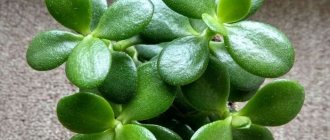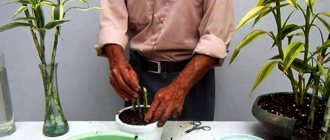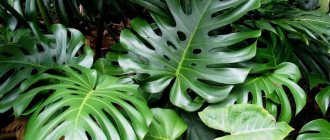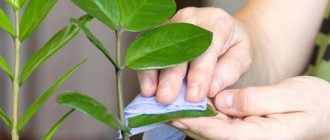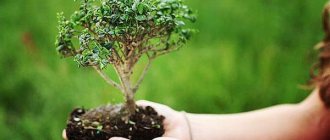One of the common indoor plants is the Crassula, which is also called Crassula or money tree. The culture's birthplace is the arid regions of South Africa. Crassula succulent is easy to care for. It is necessary to comply with the minimum requirements: timely watering, monitor the temperature and lighting. A succulent should be replanted periodically, so it is useful for any novice plant grower to know how to replant a money tree correctly.
Growing a money tree
Mystics say that in order for a miraculous talisman of wealth to bring prosperity to the house, it is not enough to observe rituals and cast spells to attract money. It is necessary to independently grow a healthy, strong money tree from a seedling - only then will it begin to help its owner.
Money tree in conditions close to natural
Whether to accept such statements as truth or to consider them superstitions is up to the owners of fat women to decide. Every gardener can create optimal living conditions for a home plant.
After a small sprout of red rose appears in the house, you will need to decide:
- What pot and what kind of soil to plant it in (choose a plastic or ceramic container with small drainage holes, use a mixture of peat, leaf soil, sand in a ratio of 2:2:3).
- Where to place it (in a room with bright diffuse lighting, air temperature from 20 to 30 ° C, air humidity within 70%).
- When to water and feed (watering is carried out after the top soil layer has dried by 1/3, fertilize only during the growing season from March to September).
Flower growers usually propagate the money tree indoors by cuttings. Small stems for rooting are planted in temporary thin-walled plastic containers or disposable cups.
For your information! Sometimes several cuttings are placed in common containers, then it becomes necessary to plant these plants.
Krasula cuttings in a temporary cup
Transplanting a Crassula cutting
For rooted cuttings, choose a pot that is not too large - with a diameter 2-2.5 cm wider than the crown of the plant. Transplantation is carried out using the transshipment method: without disturbing the earth clod. A thin temporary planting container is cut if there is no guarantee that the flower can be removed without the soil falling off the roots. The seedling is placed in a new planting pot, the empty spaces are filled with pre-prepared soil.
After some time, the growing tree will become small in size, the soil will be depleted, the tree will begin to shed its leaves and will stop growing, so the question will arise of how to replant the money tree in such a way that it does not dry out after replanting.
Important! If a pot without holes for draining water is used to plant a money tree, then a layer of expanded clay up to 5 cm thick is poured onto the bottom of the pot.
Crassula after the first transshipment
Preparing the plant for transplantation
Before you start transplanting a money tree, you need to prepare:
- Container for transplantation;
- Soil mixture;
- Plant.
The container for transplanting should be of the recommended size and shape, and also be made of red clay or other ceramic material. Used pots should be thoroughly washed with soap and rinsed with hot water. It is recommended to soak new clay pots in warm water for 1 day so that they do not dry out the soil during the first time after replanting.
Soil for a money tree can be purchased and mixed yourself. Typically, soil mixtures are sold already processed; they are free of pests, fungi and pathogenic bacteria. This soil can be immediately used for replanting. But if it has a characteristic mushroom smell, treatment is necessary. It is also necessary to cultivate the soil mixed with your own hands.
Before transplanting, the soil is steamed at a temperature of 80°C for 0.5-1 hour. To do this, it is placed in a metal tray, moistened, covered with foil and placed in the oven. After steaming, when the soil has cooled, it is ready for use. Sometimes the soil is calcined on metal sheets, but with such heating it loses some nutritional properties. Therefore, soil treatment by steaming is preferable.
Preparing the plant consists of watering it in a timely manner to ensure the necessary moisture in the earthen ball. When transplanting, the soil should not crumble; the lump of earth should remain moist. The plant is well watered. After 3-4 days, when the soil dries a little, the flower is ready for replanting.
When and how often is a money tree transplant done?
Replanting of fat plants up to 3 years of age is carried out annually, then the plants are replanted once every 2 years. The timing of transplantation depends not only on the condition of the flower, but also on its type.
How to propagate a money tree at home
Crassulas can be:
- tree-like - these include a plant called the money tree - Crassula ovata;
- creeping - with fleshy shoots;
- columnar - with thick fused opposite leaves.
The leaves of various types of Crassula can have an oval, lanceolate, elliptical, pointed shape. The money tree grows small, glossy, fleshy leaves that resemble coins.
Interesting! The Crassula ovata group includes two artificially bred, similar varieties with oblong tubular leaves - Hobbit and Gollum.
Crassula ovata Hobbit
What kind of soil and pot are suitable for the flower?
How to form a money tree at home
The main feature of the money tree is its fleshy leaves, which are capable of storing water. To ensure that the plant grows comfortably, special soil is used. It is acceptable to use ready-made soil for cacti. If it is not possible to purchase it, use universal soil for indoor plants with additional sand in a ratio of 1:4.
Prepare the earthen mixture for Crassula yourself. To do this, make a mix of:
- one part sand;
- one part of turf land;
- three parts of leaf soil;
- ash;
- four tablespoons of humus from clay.
The money tree does not tolerate excessive soil moisture. It is imperative to have drainage so that the water in the pot does not stagnate. To do this, use:
- walnut shells (crushed);
- small pebbles;
- broken brick;
- expanded clay
Preparing the soil for replanting
Experts do not recommend using a plastic pot. Preference is given to containers made of ceramics or clay. These materials are durable, since the money tree grows strongly and becomes heavy.
The pot is chosen not only according to the degree of reliability, but also stability. It is important to have a wide bottom so that the container does not tip over under the weight of the plant. Since the fat plant has superficial roots, choose a shallow pot. If the container is too spacious, the plant will lose strength. Each subsequent transplant is performed into a larger pot.
How does the Crassula grow?
A young seedling of Crassula ovata gradually develops into a plant with a strong, thick stem and short branches covered with gray-green skin. In older reds, the skin thickens and may separate in horizontal stripes. The plant blooms in adulthood; during this period, the bush is decorated with pale pink star-shaped inflorescences collected in bunches.
How to feed a money tree at home
In nature, flowers are pollinated by insects. At home, this process can be carried out by house flies, but if there is a need to obtain high-quality seeds, artificial pollination is carried out using a brush. As a result, small capsules filled with many small seeds will appear in place of the flowers.
Note! For flowering, red flowers need a lot of bright, but not scorching light.
Krasula flowering
When is the best time to carry out the procedure and is it possible in winter?
- Spring is the best time to transplant Crassula. An active vitality allows you to survive stress and adapt to a new place of residence.
- In summer , after the procedure, the pot is placed on the shady side, despite the plant’s love for the sun’s rays. After two to three weeks, the transplanted bush returns to a sunny place. This time is required to restore the microflora in the pot.
- In winter and autumn, the money tree rests - all manipulations with the plant are harmful.
According to the Lunar calendar, a good time will be:
- spring day;
- second lunar day;
- day of week Wednesday.
When is a transplant done?
Before planning to transplant a fat plant that has reached the age of 1 year, it is necessary to observe which periods are active for the plant. It is at this stage of their development that they will take root well and suffer less from damage to the root system.
Money tree - how to plant a shoot at home
The money tree is a succulent (moisture storage plant in stems and leaves) of the southern hemisphere, where summer begins in December. At home, in November they begin to grow new roots, leaves and stems. In winter (according to the northern calendar), crassulas bloom and reproduce in spring. Then from May they go into a resting stage.
For a plant adapted to the conditions of the northern hemisphere, the active growing season begins in March-April. Most types of money tree grown in Russia are adapted to dormancy from the end of November. Since this time, the fat plants are practically not watered, not fed, not cuttings, and not forming a crown.
Reproduction and transplantation of Crassula ovata aged one year and older into another pot is carried out from late spring to mid-July. Fans of the Lunar Calendar advice believe that the money tree should be planted during this period on the days of the waxing Moon.
Additional Information! Dust quickly accumulates on the leaves of the money tree and closes the stomata through which the plant breathes and absorbs moisture from the air. To prevent disruptions in the process of photosynthesis, the leaves of the fat plant are regularly wiped with a damp cloth.
Crassula with a crown formed in bonsai style
Why might it be needed?
Because the money tree is a slow-growing succulent plant, it does not require frequent replanting.
But in order to maintain proper decorativeness, and therefore preserve the “magical” properties of the plant, you will have to move it to a new pot from time to time. The money tree is transplanted in the following situations:
- The soil substrate has become depleted. And there are very few useful minerals left. In addition, due to the systematic application of chemical fertilizers, the soil gradually becomes salty.
- The fat plant has grown out of its planting pot. And he became too small for her. Tree roots came out of the drainage holes.
- There are clear signs of rot infection. Or harmful insects that cause damage to the root system. Due to excessive moisture in the substrate, the roots also rot and decompose.
- A new plant was purchased or given as a gift. And it was initially placed in a pot with soil mixture. In this case, the tree is isolated for 2-3 weeks before relocation.
How to transplant a money tree into another pot
Step-by-step process for transplanting an adult Crassula ovata plant:
- Choose a thick-walled ceramic or earthenware pot with drainage holes, 5-10 cm in height and 5 cm in diameter larger than the previous one. A heavy container will balance the weight of the growing crown of the tree. The pot is washed with a pink solution of potassium permanganate.
- Buy special soil for succulents or prepare a loose soil mixture with a neutral acidity level yourself. The soil is disinfected or calcined in a hot oven. 2-3 days before planting, water with settled or spring water. At the time of planting, the soil should be semi-dry.
- A layer of expanded clay, agroperlite or vermiculite is poured onto the bottom of the pot; these materials will prevent the roots of the fat plant from rotting if the soil is accidentally overwatered. Fans of the mystical qualities of the money tree place charmed coins at the bottom of the planting container. A small layer of soil mixture is poured on top.
- An adult plant is removed from the pot with great care: the trunk of a 1-2 year old flower, which has not yet grown sufficient thickness of the surface skin, may break. Gently shake off half the soil from the roots. The tree is placed in a pot, all empty spaces are covered with damp, crumbly soil.
- Water the soil in the pot, allow the water to drain, and add soil to the level of the root collar. A few days later, after the soil has settled again, moist soil is added again.
Important! An adult fat plant purchased at a garden store is replanted after it has become accustomed to its new location—its leaves stop drying out and falling off. Adaptation usually takes about 2-3 weeks.
Root system of an adult money tree
Transplantation of the red shoot
When forming a crown, side shoots are usually removed from the lower part of the central trunk of the Crassula. They can be used to produce a new tree. A shoot 3-5 mm thick and up to 5 cm high is separated from the mother plant using a disinfected pruner. The cut is made at a slight acute angle. A hole should not form on the main stem after the cut. In order not to damage the skin of the flower, a 2-3 mm stump is left on the trunk.
A couple of lower leaves are removed from the shoot. The lower end of the cutting is dipped for a few seconds into a solution of any root formation stimulator, diluted according to the manufacturer’s instructions. It must be remembered that a product such as succinic acid dissolves in hot water, while the plant is dipped into a cooled liquid. After immersion in the solution, the shoot is dried in the open air for several hours.
Note! There are two ways to root a shoot: in water and in a moist soil substrate.
In order to control the degree of immersion of the cutting in water, a restrictive lid with a slot is placed on the top of the glass with liquid, through which the leaves of the shoot cannot slip through. Water is added periodically.
The container with the plant should be in a warm, well-lit place. Direct sunlight on the leaves of the shoot is not allowed. The first root threads appear 10-15 days after the cutting is placed in water.
Basal shoot of Crassula
To take root in a moist substrate, the plant needs to provide a greenhouse effect. To do this, prepare a container - a mini-greenhouse. This can be a tall plastic container with a lid or a low tray that can be covered with a cut plastic bottle or glass jar. Both types of greenhouses must have drainage holes.
The lower part of the shoot is immersed in the ground to a depth of 3-4 cm. The greenhouse is placed in a room with diffused light. Ventilate the soil daily for 20-30 minutes and moisten the soil substrate.
Important! It is better not to move the container with the plant from place to place.
After the first pair of new leaves grow on the rooted cuttings, the young plants are transplanted into a pot of a suitable size.
Sometimes fallen leaves of the plant take root on their own in the root zone of the plant. The owner of the flower can only ensure that the soil near such seedlings is always moderately moist. Some gardeners resort to rooting the lower shoots by bending them to the soil and fixing them in this position using a wooden bracket and moist soil.
Crassula seedling from a rooted leaf
What problems may arise during transplantation?
Sometimes mistakes made during transplantation lead to problems that affect the health of the money tree, leading to the loss of its energy and connection with the owners of the house in which it grows.
Did you know? There is an opinion that Crassula is so closely connected with its owner that it gets sick and recovers together with him, absorbing both positive and negative energy.
If the soil composition is incorrect, plant growth slows down. A large pot, excessive watering or keeping it at low temperatures will cause rotting of the roots and shoots. Direct sunlight can cause leaf burns on immature plants. If you do not violate the simple rules of care, the money tree will grow large, strong and will attract wealth and good luck to your home.
Caring for the money tree after transplantation
Proper care of succulents, the group of which includes the money tree, consists of maintaining the correct watering regime. Plants that, under natural conditions, accumulate moisture in their stems and leaves during the rainy seasons and then gradually consume it during periods of dry, hot weather, live in the same rhythm in indoor conditions.
Watering
Water the krasula in spring, summer and autumn 1-2 times a month, after checking the condition of the soil in the root zone of the flower: the soil surface should be dry. But infrequent spraying of leaves from a spray bottle in the heat will only have a positive effect on the flower.
From November to February, the soil in the pot should dry out by almost half, only then can watering be carried out. Excessive watering of the fat plant during winter dormancy will lead to rotting of its roots, the appearance of rot, weakened immunity, and ultimately can cause the death of the tree.
Top dressing
Crassulas are undemanding to soil fertility because they grow slowly and also gradually consume food from the soil. Therefore, trees are fed only in the spring - at the beginning of the growing season, in summer and early autumn.
In spring, complex fertilizers are used for vegetative succulents, containing nitrogen, phosphorus, potassium and microelements. In summer and autumn, mixtures containing potassium and phosphorus are used for fertilizing.
Important! During the dormant period, plants are placed in a bright, cool room; in the summer they are placed on the balcony, shading them from the scorching sun.
Indoor Crassula can be a large tree with a dense crown
Soil selection
The soil mixture plays an important role when planting. It must be loose enough so that the Crassula root system receives a certain amount of oxygen. You can buy ready-made soil at a specialty store or mix the soil yourself. When choosing ready-made soil, you should give preference to a substrate intended for succulents. Before purchasing, carefully study the composition of the soil substrate. It should not contain peat, which increases the acidity of the soil. And the soil for Crassula should be low acidic.
In addition to the main soil for Crassula, you need to take care of the drainage layer. It is drainage that prevents water from remaining in the soil. Without drainage, water will stagnate, leading to root rot of the plant. Crushed stone, brick chips, and gravel can be used as drainage. Shredded polystyrene foam is also suitable, which can protect the soil from freezing.
You can make your own soil mixture for a money tree. The substrate must include the following components:
- turf land;
- deciduous soil;
- humus (small amount);
- sand (must be river and coarse-grained);
- wood ash.
When making your own soil substrate, it is important to treat the soil before placing it in a container. For processing, you need to pour raw sand into a metal container. Spread the base soil on top in an even layer. The container with the soil substrate should be covered with foil and placed in the oven. The soil should be “bake” for 40–50 minutes at a temperature of 80–100 °C. After frying, it is necessary to give the soil substrate time to cool, and only then can it be placed in a pot.
The main mistakes in the process of transplanting a money tree
The plant is replanted as the crown of the tree begins to significantly exceed the boundaries of the walls of the pot. The new pot should not be much larger than the previous one. The plant is not suitable for acidic or alkaline, very dense or fertile soil. A recently transplanted plant should not be kept in a draft or in a place where it will be exposed to direct sunlight.
Caring for a well-established money tree is not difficult and very interesting. After all, it can be used to form both a large exotic plant and a miniature bonsai. In any form, it will delight the owners with its appearance, and perhaps bring the well-being they dream of to their homes.
